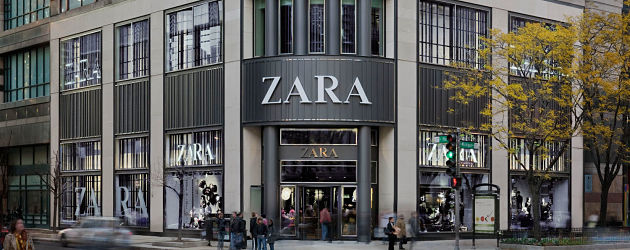Imagine a retail clothing store that reacts to trends within days instead of quarters? What can your business learn from Zara, and the brilliant retailer, Amancio Ortega? Ortega is said to be worth $72 billion dollars and just behind Bill Gates as world’s richest person and a step ahead of Warren Buffet. You have heard of fast food? How about fast fashion?
Meet Zara and the world of Fast Fashion
Zara has a completely different business model with over 6,000 outlets. Unlike most retailers, they carry little inventory and update their collection often. Where traditional retailers replenish and update once or twice per year, Zara replenishes once or twice per week.
Think about how disruptive their model is and how they had to create a different supply chain to make this work.
Their approach rewards consumers who have to keep coming back often since what they like will disappear overnight. And, they always have “what’s new” coming in tomorrow, so it provides an incentive to see what just arrived.
Retailers from Stella McCartney to Prada and Louis Vuitton have to react differently to the fashion cycle because of Zara. Also, they are puncturing the notion of needing to be high-end to be cool. More and more celebrities are seen wearing Zara products and dozens of established retailers are suffering from their speed and golden touch.
Lessons from Zara for Your Brand
- Is there an opportunity to change the rhythm and buying cycle of your consumers in your category? What could you do to challenge convention?
- How can you get closer to customers desires so that they have an incentive to shop and buy more often?
- It is no longer just fast food – think fast fashion
- What would happen if you could start from scratch with an emphasis on scarcity so that what you put out in retail expires at 10 times the speed?
- Is your business model just a copy and paste of what others do? How will you stand out from the crowd?
- When you see failure in the marketplace, do you truly understand what is broken and why in today’s faster paced environment?
- According to the NY Times, Zara’s centralized supply chain is “mind-spinningly supersonic, not just fast. What does your business do that separates you from the competition in a big way?
Competitive Advantage
Speed and responsiveness appear to be more important than cost to this company. They control the means of production and its distribution. They have a built-in flexibility that provides market-based feedback prior to making full production commitments. So if red dresses are selling but the in-store feedbacks say they’d prefer collars, the next batch will have collars. Slate magazine reported, up to 50% of Zara’s clothes are actually designed and produced in the middle of the season. This allows almost instant response to trends. Talk about your lean manufacturing and continuous improvement. They recently added an RFID fashion tags to control inventory to give them all the data to follow their capital from production to the consumer’s home.
Are you looking at your marketplace to do everything like everyone else? Or, are you searching for a true competitive advantage? Take a stroll through Zara and learn how they think differently and faster than their competitors.
Do you need a sounding board to help you think through a new competitive advantage for your brand? I’m happy to listen and offer some tailor-made ideas.




